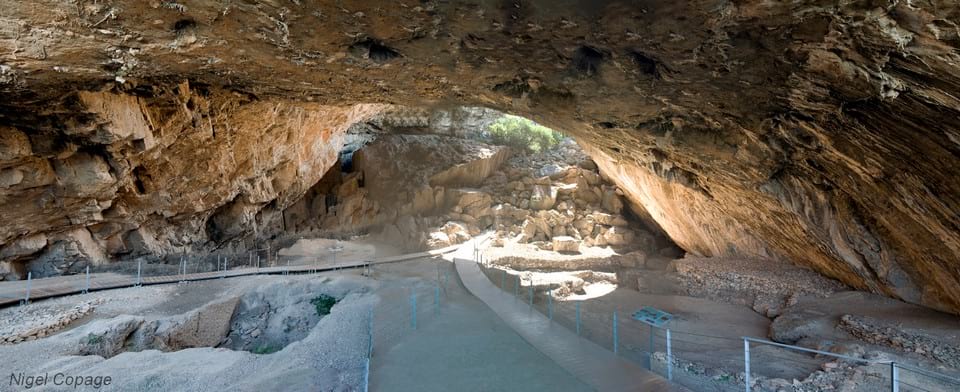
Franchthi bay is situated on Khoilada bay in the south of the Argolid peninsular. It was first inhabited in the early stone age (Paleolithic era) and was in use until around 3000 BC, the longest recorded sequence of occupation of any site in Greece. It is one of the most studied stone age sites in South East Europe and one of very few sites in Greece relating to the Mesolithic era.
At first the cave was used on seasonal basis by groups of hunter-gatherers but during the Neolithic period it came to be occupied year round. At this time there was a settlement on the extensive coastal plain outside the cave which gradually came to be submerged as a result of rising sea levels so the cave is now just a few metres away from the shoreline.
Paleolithic Era (20000 – 8300 BC)
During this period the cave was occupied by small groups of hunter-gatherers of up to 30 in size. They mainly appear to have hunted wild ass and deer although wild pigs, hares, birds and tortoises also formed part of their diet. No evidence has been found of any plant foods until around 11,000 BC after which traces of lentils, vetch, pistachios and almonds appear.
The early stone age cave dwellers used basic stone tools such as primitive blades for cutting and scrapers for removing hides. These tools were made of flint and chert although from about 13,000 BC obsidian began to be used. The obsidian came from the island of Milos so its appearance at Franchthi is evidence of seafaring skills among these early modern humans in Greece
Mesolithic Era (8300 – 6000 BC)
Throughout the middle stone age the cave continued to be used seasonally but the diet of its inhabitants gradually changed. From about 7000 BC the cave occupants also consumed wild pears, peas and cereal foods such as wild oats and barley.
During this period an increasing amount of fish was eaten and the bones of larger fish such as tuna have been found inside the cave. This implies the ability to carry out deep sea fishing although alternative explanations are that fish were caught in nets or were driven close to the shore and then clubbed.
Another feature of this era is the use of rocks and minerals which would have had to be transported to sea to Franchthi. Millstones have been found made of andesite which could only have come from the islands of Aegina or Poros in the Saronic gulf. And increasing use is made of Obsidian from Milos an island which is 150 km away.
Within the cave evidence has been found of a number of burials including a 25 year old male in a shallow pit near the entrance. Other burials relating to this era represent all ages from new born babies, children both young and teenage and adults. This suggests the existence of an organised cemetery which in turn implies that the humans who occupied the cave did so on a permanent basis.
Neolithic Era (6000 – 3000 BC)
The cave at Franchthi is also important as providing some of the earliest evidence for agriculture in Greece. The remains of domesticated plants and animals have been found from about 7000 BC onwards suggesting that the cave inhabitants had begun to practice agriculture although an alternative explanation is that they obtained these foods by trading with the Neolithic peoples that had started arriving from the near East. Either way it seems clear that during the seventh millennium BC the Mesolothic hunter-gatherers at Franchthi began to adopt the farming practices of Neolithic colonists.
And during this period the main area of occupancy shifted from within the cave to the coastal plain which separated it from the sea (now submerged). Terraces were built to enable the growing of crops and it is thought that there was a village or settlement on this plain although it has yet to be found (underwater investigations are ongoing).
The use of pottery became common during this period and items of jewellery have been found, many of which were made from shells. It is known that raw materials had to be imported and it has been suggested that the site included a workshop for the manufacture of beads and so on which could have been used for trading purposes.
Later history
The cave was eventually abandoned at around 3000 BC and this is likely to have been due to the rising sea levels which submerged the plain on which agriculture depended as well as the settlement itself. The cave also suffered from earthquakes and this seismic activity triggered rock falls which significantly reduced the amount of usable living space.
Some findings within the cave date to the Bronze Age suggesting it was periodically visited and there is some evidence that Franchthi served some sort of religious or cult function in classical times. However there is no evidence that the cave was occupied after 3000 BC. In more recent times and for much of the twentieth century the cave was used as an animal pen.
Excavations
Excavations were carried out between 1967 and 1979 by Indiana University under the leadership of Professor T W Jacobsen and under the auspices of the American School of Classical Studies in Athens. These investigations looked at both the cave at Franchthi and the area outside it. Later studies have been conducted by the Ephorate of Palaeoanthropology-Speleology of Southern Greece. In recent years the facilities within the cave have been enhanced with the addition of wooden walkways, information boards and handrails around the deeper pits.
In 2012 the Bay of Kiladha project was initiated with the aim of searching for a submerged Neolithic village, organised jointly by the University of Geneva and the Greek Ephorate of Underwater Antiquities. This involves mapping the pre-historic landscape and also involves drilling for core-samples and searching for evidence of habitation. In 2015 the Terra Submersa team found the remains of an early Bronze Age city several hundred metres north of Franchthi at the entrance to the bay. The remains include various buildings, roads and a fortification wall with three large towers. The visible remains are dated to the same time as the House of Tiles at Lerna but second and third layers can be dated back to the Neolithic period suggesting the site is over 5000 years old and may well have overlapped with the Neolithic settlement at Franchthi.
The cave is open at all hours and entrance is free
Click here for a short video on Franchthi cave

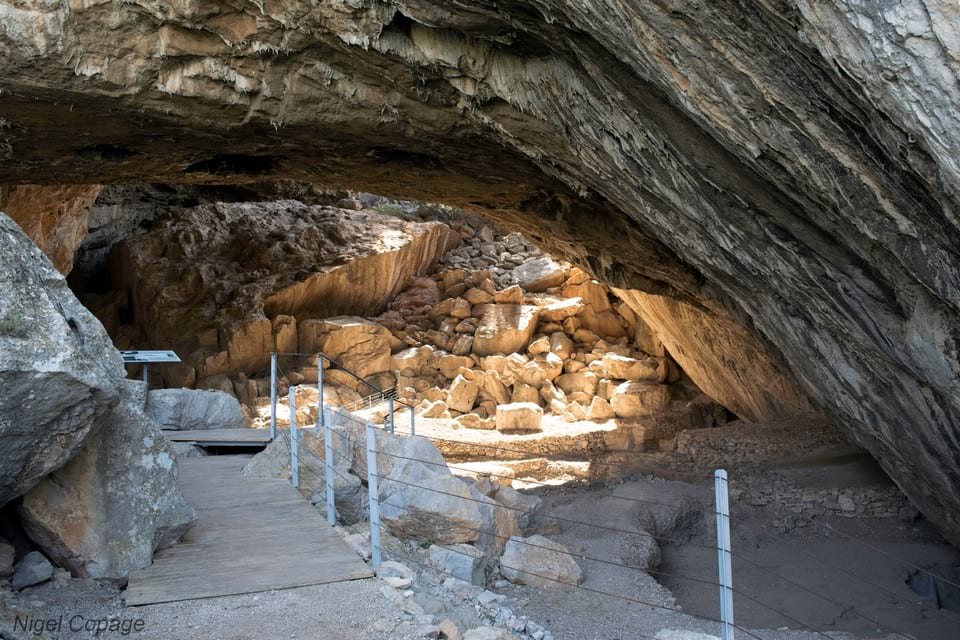
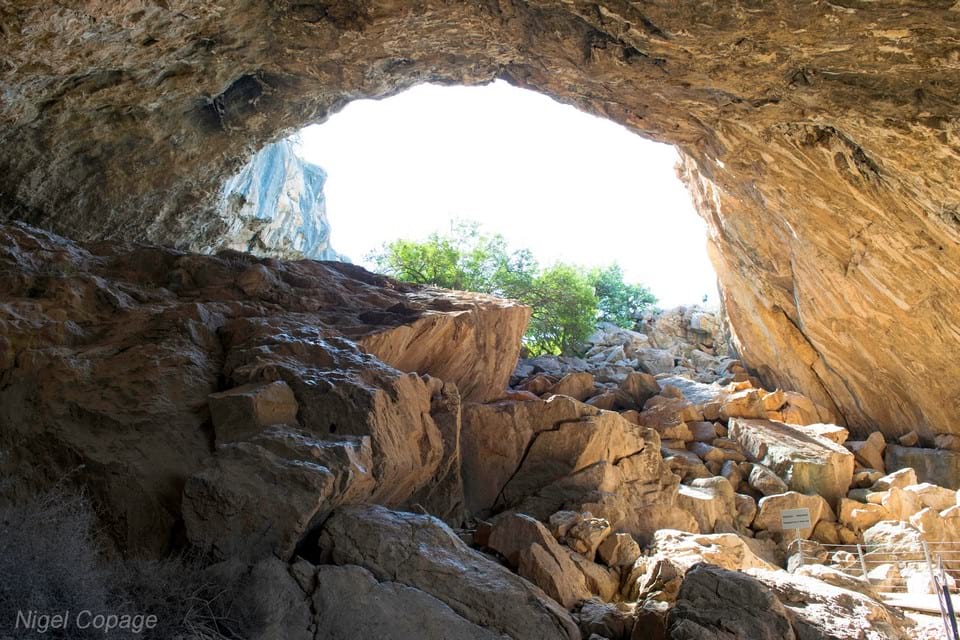
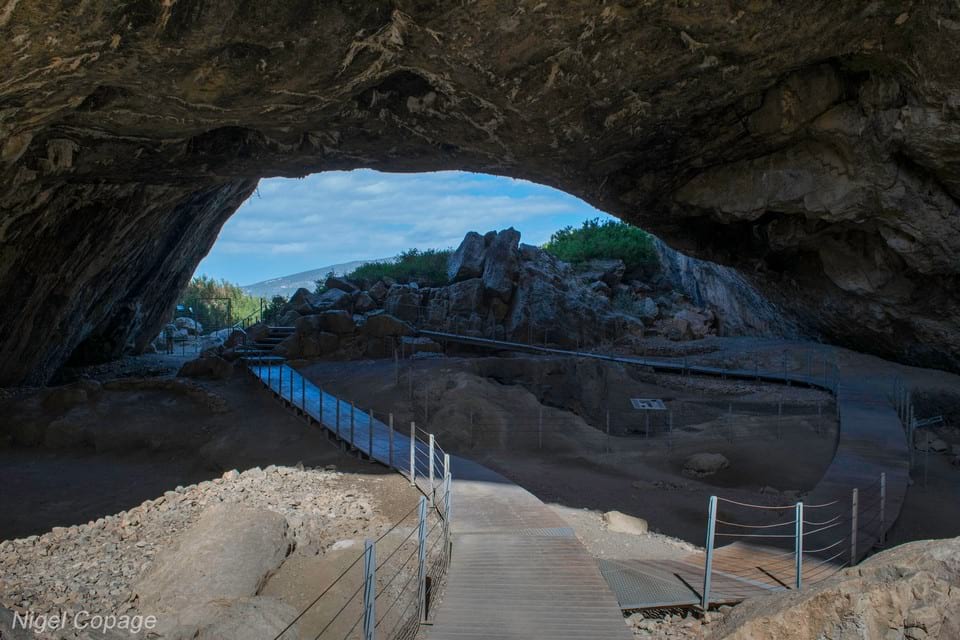
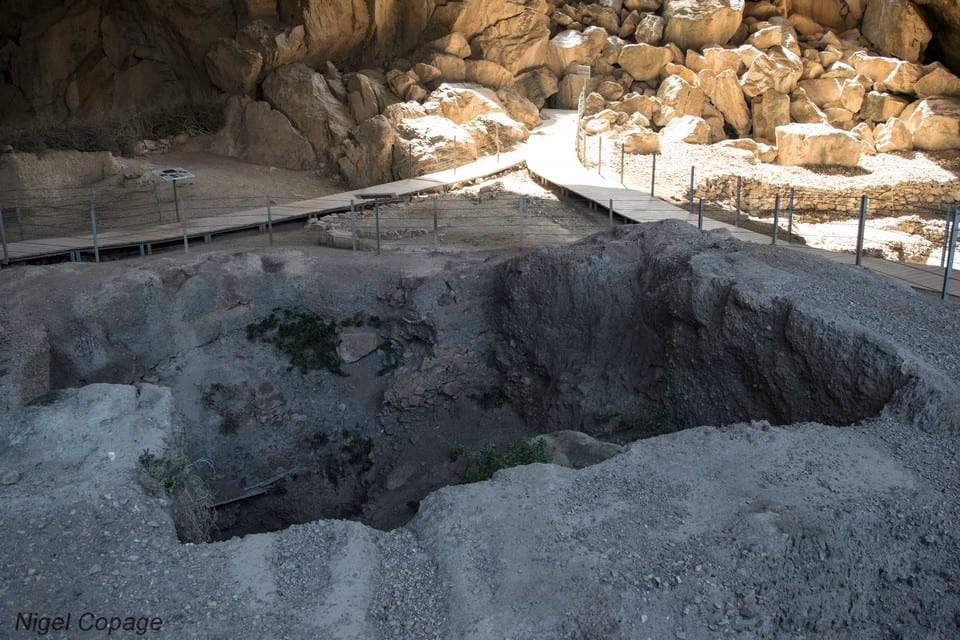
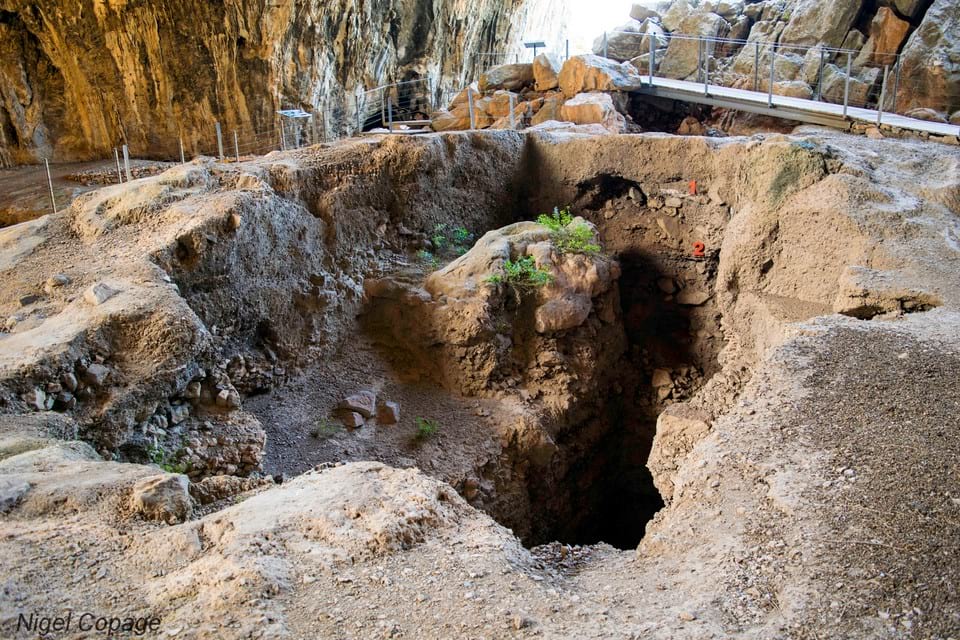
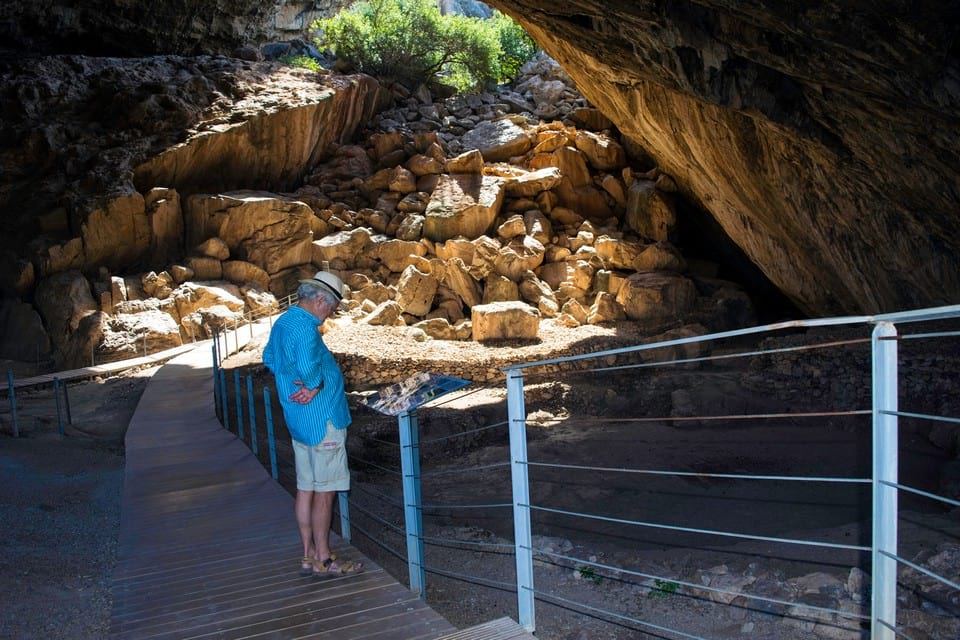
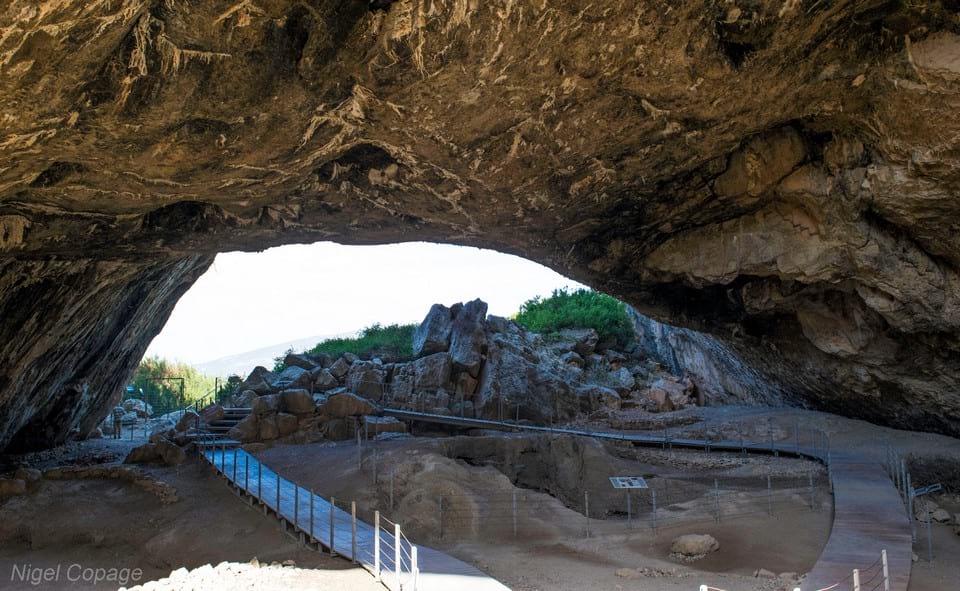

 An information board at the site showing the shoreline around 6500 BC
An information board at the site showing the shoreline around 6500 BC
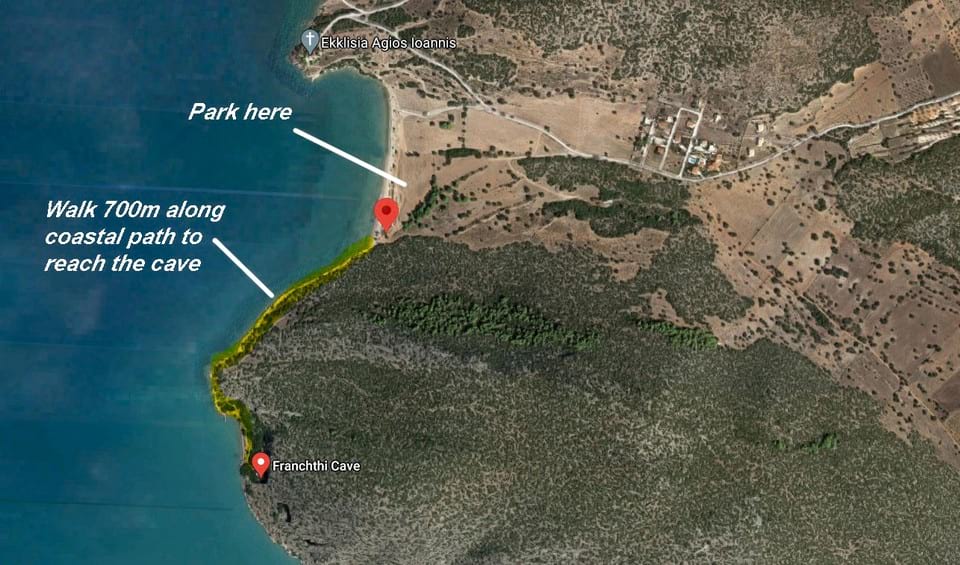 The map below is for the parking from which a 700m rocky coastal path leads to the cave
The map below is for the parking from which a 700m rocky coastal path leads to the cave